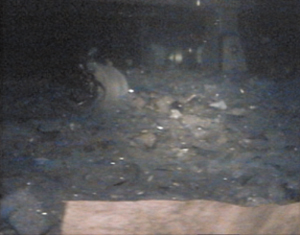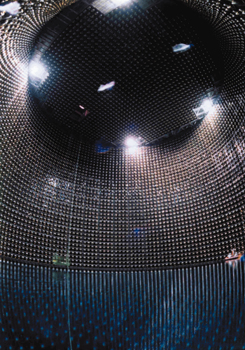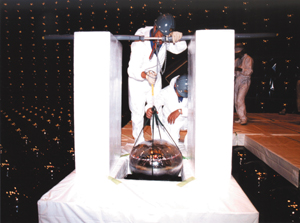
On 12 November, as reported briefly in CERN Courier, several thousand large photomultiplier tubes imploded in the huge Super-Kamiokande underground neutrino detector in Japan. The extent of the damage suggested some kind of chain reaction in the tubes, with one implosion setting off the next. It happened as the detector was being refilled with water after routine maintenance.
The detector began physics operation in 1996 and had produced important results, monitoring particles from the Sun, from cosmic-ray interactions in the atmosphere and from the Japanese KEK laboratory 250 km away. Recent results showed that synthetic muon-type neutrinos from KEK do not always show up as expected. The detector also provided key benchmarks for solar neutrinos. These results had been a major influence on physics thinking, and researchers were eagerly looking towards more.

A Japan-Korea-US collaboration, the Super-Kamiokande detector uses 50,000 tonnes of pure water as a neutrino target 1000 m below ground. The water target is 40 m high and monitored by 11,200, 50 cm diameter Hamamatsu R3600 photomultiplier tubes, and it is divided into a 32,000 tonne inner detector where the events are logged, and an 18,000 tonne outer volume to screen off unwanted effects. Most of the photomultipliers are deployed in the inner detector to pick up the flashes of light created when neutrinos interact with the water.
Apparently, a tube, probably near the bottom of the detector, imploded and set off a chain reaction, destroying much of the detector to a depth of about 2 m below the water level. The instrumentation at the top of the detector survived. The chain implosion caused around 8000 tubes to be destroyed, and it also wreaked havoc with the detector infrastructure.

The Hamamatsu R3600 photomultiplier tubes were first used in Kamiokande, the current detector’s predecessor, which was built in the same underground mine in the early 1980s. The initial goal of that experiment was to search for signs of proton decay (the “-nde” suffix is short for “nucleon decay experiment”). This detector used 1000 photomultipliers and a 300 tonne water target. Kamiokande’s observations of the 1987 supernova marked the beginning of a new science – neutrino astronomy – and Super-Kamiokande was set to follow this tradition.





